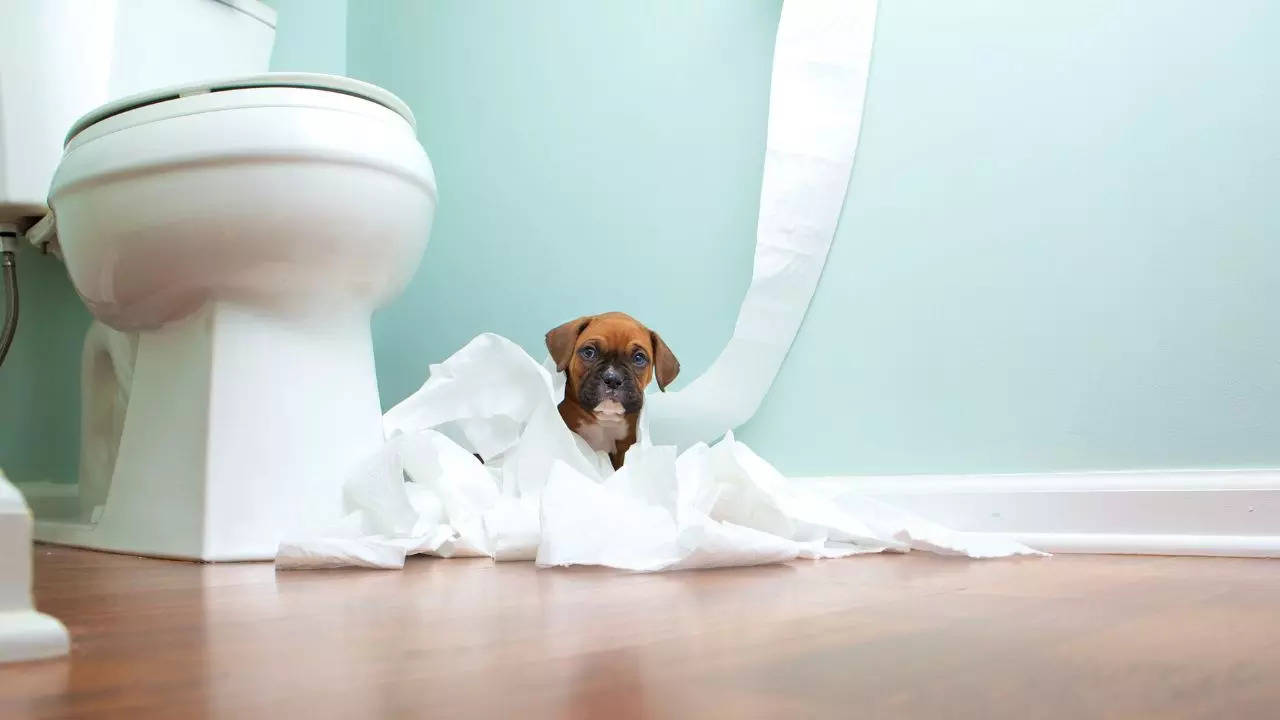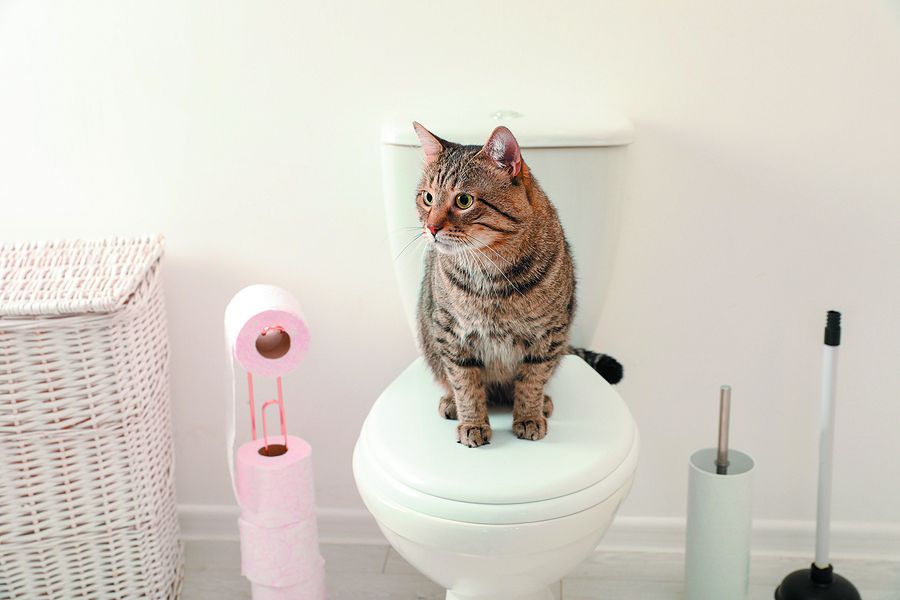Highly-Rated Explanations to Refrain from Flushing Animal Waste Down the Toilet
Highly-Rated Explanations to Refrain from Flushing Animal Waste Down the Toilet
Blog Article
Are you searching for resources concerning Can You Flush Dog and Cat Poo Down the Toilet??

When it concerns dealing with waste, particularly animal waste, many people usually turn to the practical option of flushing it down the bathroom. However, this relatively very easy option can have serious consequences for the setting and public health. In this short article, we'll check out why flushing animal waste down the bathroom is a poor idea and give different approaches for correct disposal.
Intro
Appropriate waste disposal is critical for keeping environmental sustainability and public health. While it may appear harmless to purge animal waste down the commode, it can result in numerous concerns, both for the environment and human well-being.
Threats of flushing pet waste
Environmental influence
Purging animal waste presents unsafe microorganisms and virus into waterways, which can negatively impact water ecosystems. These microorganisms can infect water resources and injury marine life, disrupting delicate ecosystems.
Public health issues
Animal waste includes unsafe bacteria such as E. coli and Salmonella, which can pose major health and wellness risks to humans. Purging pet waste down the toilet can contaminate water products, bring about the spread of conditions and infections.
Alternatives to flushing
Rather than flushing animal waste down the bathroom, there are numerous different disposal approaches that are a lot more eco-friendly and hygienic.
Composting
Composting animal waste is a green method to get rid of it. By composting, organic matter is broken down right into nutrient-rich dirt, which can be used to fertilize gardens and plants.
Garbage dump disposal
Getting rid of pet waste in a land fill is another option. While not as environmentally friendly as composting, it is a much safer choice to flushing, as it prevents the contamination of water resources.
Family pet garbage disposal systems
There are specific family pet waste disposal systems available that securely and hygienically dispose of pet waste. These systems usually make use of enzymes to break down waste and get rid of smells.
Steps to appropriate animal waste disposal
To ensure correct disposal of pet waste, follow these steps:
Scooping and nabbing waste
Consistently scoop and bag animal waste utilizing naturally degradable bags. This stops waste from infecting the environment.
Using marked waste bins
Dispose of bagged pet waste in assigned waste containers, such as garden compost containers or land fill containers. Prevent flushing it down the commode at all prices.
Cleaning can and pet locations consistently
Frequently tidy can and family pet areas to stop the build-up of waste and germs. Use pet-safe cleaning items to preserve health.
Benefits of correct disposal methods
Embracing proper disposal techniques for pet waste supplies a number of advantages:
Lowered environmental pollution
Proper disposal methods reduce the threat of environmental pollution, safeguarding rivers and ecological communities from contamination
Reduced threat of water contamination.
By preventing flushing pet waste down the commode, the danger of water contamination is significantly reduced, protecting public health.
Improved sanitation and health
Appropriate disposal methods promote better cleanliness and hygiene, creating a more secure environment for both people and pets.
Final thought
Finally, purging pet waste down the toilet is harmful to the setting and public health. By taking on alternative disposal approaches and complying with appropriate waste management methods, we can reduce the negative impact of animal waste and contribute to a cleaner, much healthier planet.
Why You Should Never Flush Cat Poop Down the Toilet
A rose by any other name might smell as sweet, but not all poop is created equal. Toilets, and our sewage systems, are designed for human excrement, not animal waste. It might seem like it couldn’t hurt to toss cat feces into the loo, but it’s not a good idea to flush cat poop in the toilet.
First and foremost, assuming your cat uses a litter box, any waste is going to have litter on it. And even the smallest amount of litter can wreak havoc on plumbing.
Over time, small amounts build up, filling up your septic system. Most litter sold today is clumping; it is made from a type of clay that hardens when it gets wet. Ever tried to scrape old clumps from the bottom of a litter box? You know just how cement-hard it can get!
Now imagine just a small clump of that stuck in your pipes. A simple de-clogger like Drano isn’t going to cut it. And that means it’s going to cost you big time to fix it.
For an amusing, graphic tale of what happens when you flush too much litter down the toilet all at once, take a few minutes to read Gene Weingarten’s 2017 Washington Post column “So that’s what happens when you flush cat litter down the toilet.”
Parasitic Contamination
Believe it or not, your healthy kitty may be harboring a nasty parasite. Only cats excrete Toxoplasma in their feces. Yet it rarely causes serious health issues in the cats that are infected. Most people will be fine too if infected. Only pregnant women and people with compromised immune systems are at risk. (If you’ve ever heard how women who are expecting are excused from litter cleaning duty, Toxoplasma is why.)
But other animals may have a problem if infected with the parasite. And human water treatment systems aren’t designed to handle it. As a result, the systems don’t remove the parasite before discharging wastewater into local waterways. Fish, shellfish, and other marine life — otters in particular — are susceptible to toxoplasma. If exposed, most will end up with brain damage and many will die.
Depending on the species of fish, they may end up on someone’s fish hook and, ultimately on someone’s dinner plate. If that someone has a chronic illness, they’re at risk.
Skip the Toilet Training
We know there are folks out there who like to toilet train their cats. And we give them props, it takes a lot of work. But thanks to the toxoplasma, it’s not a good idea.
Leave the toilet to the humans, and accept your future litter cleaning duty.

Frequently tidy can and family pet areas to stop the build-up of waste and germs. Use pet-safe cleaning items to preserve health.
Benefits of correct disposal methods
Embracing proper disposal techniques for pet waste supplies a number of advantages:
Lowered environmental pollution
Proper disposal methods reduce the threat of environmental pollution, safeguarding rivers and ecological communities from contamination
Reduced threat of water contamination.
By preventing flushing pet waste down the commode, the danger of water contamination is significantly reduced, protecting public health.
Improved sanitation and health
Appropriate disposal methods promote better cleanliness and hygiene, creating a more secure environment for both people and pets.
Final thought
Finally, purging pet waste down the toilet is harmful to the setting and public health. By taking on alternative disposal approaches and complying with appropriate waste management methods, we can reduce the negative impact of animal waste and contribute to a cleaner, much healthier planet.
Why You Should Never Flush Cat Poop Down the Toilet
A rose by any other name might smell as sweet, but not all poop is created equal. Toilets, and our sewage systems, are designed for human excrement, not animal waste. It might seem like it couldn’t hurt to toss cat feces into the loo, but it’s not a good idea to flush cat poop in the toilet.
First and foremost, assuming your cat uses a litter box, any waste is going to have litter on it. And even the smallest amount of litter can wreak havoc on plumbing.
Over time, small amounts build up, filling up your septic system. Most litter sold today is clumping; it is made from a type of clay that hardens when it gets wet. Ever tried to scrape old clumps from the bottom of a litter box? You know just how cement-hard it can get!
Now imagine just a small clump of that stuck in your pipes. A simple de-clogger like Drano isn’t going to cut it. And that means it’s going to cost you big time to fix it.
For an amusing, graphic tale of what happens when you flush too much litter down the toilet all at once, take a few minutes to read Gene Weingarten’s 2017 Washington Post column “So that’s what happens when you flush cat litter down the toilet.”
Parasitic Contamination
Believe it or not, your healthy kitty may be harboring a nasty parasite. Only cats excrete Toxoplasma in their feces. Yet it rarely causes serious health issues in the cats that are infected. Most people will be fine too if infected. Only pregnant women and people with compromised immune systems are at risk. (If you’ve ever heard how women who are expecting are excused from litter cleaning duty, Toxoplasma is why.)
But other animals may have a problem if infected with the parasite. And human water treatment systems aren’t designed to handle it. As a result, the systems don’t remove the parasite before discharging wastewater into local waterways. Fish, shellfish, and other marine life — otters in particular — are susceptible to toxoplasma. If exposed, most will end up with brain damage and many will die.
Depending on the species of fish, they may end up on someone’s fish hook and, ultimately on someone’s dinner plate. If that someone has a chronic illness, they’re at risk.
Skip the Toilet Training
We know there are folks out there who like to toilet train their cats. And we give them props, it takes a lot of work. But thanks to the toxoplasma, it’s not a good idea.
Leave the toilet to the humans, and accept your future litter cleaning duty.

I came across that review about Don't Flush Your Pets Poo Down The Loo, Vet Warns when doing a lookup on the internet. Sharing is caring. One never knows, you may just be doing someone a favor. I praise you for being here. Please check up our blog back soon.
Contact Us Today Report this page